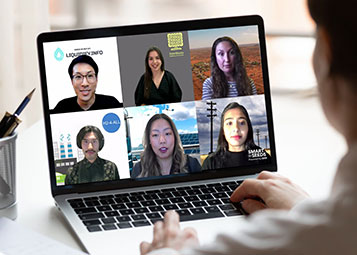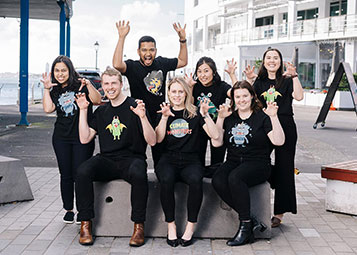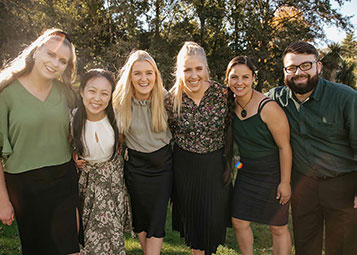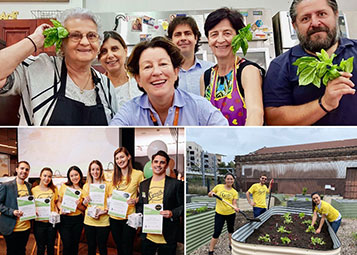Melbourne
Smart Seeds Lite: The Journey of SOL
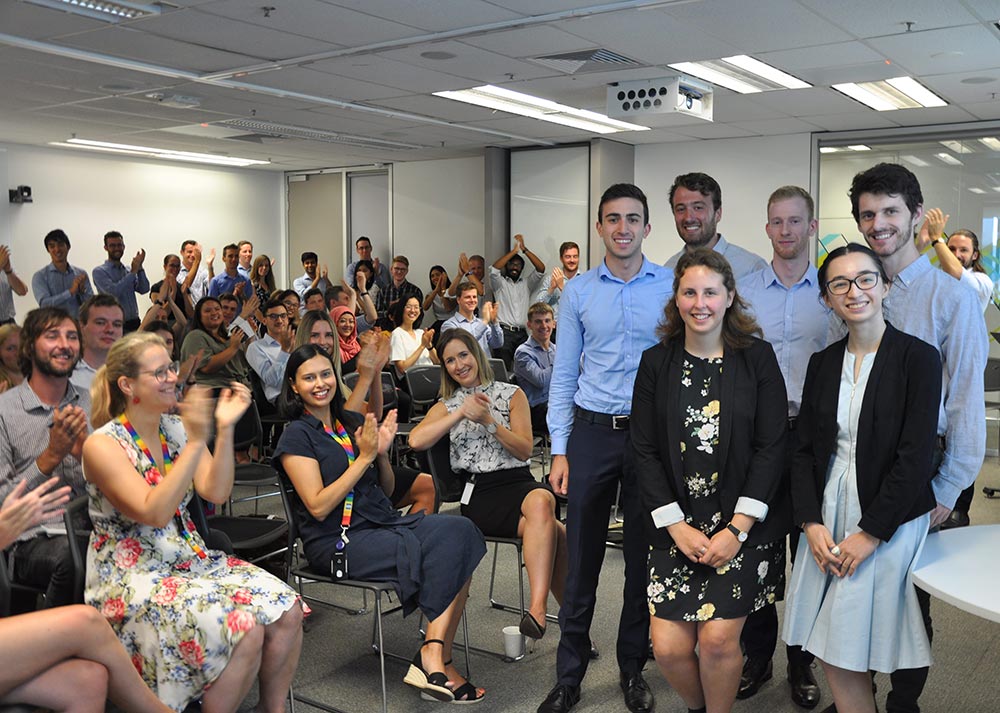
February 15, 2020

Every year, GHD employs a talented, multi-disciplined group of undergraduate engineers and scientists in the Vacation Student program. Smart Seeds too, has its roots in the Vacation Program in 2012, find out more in our story.
Today, Smart Seeds is a global network of collaborators, and we look forward to welcoming Vacation Students to participate in Smart Seeds Lite each year, an accelerated version of the full program currently running in Australia, New Zealand, the UK and North America.


The 2018-2019 installment of Smart Seeds Lite concluded a few weeks ago with a fantastic Showcase Event, where 6 teams presented their ideas in response to the challenges set at the beginning of the program six weeks prior.
For the first time in Smart Seeds Lite history, one team took out both the Judges’ Choice and the Peoples’ Choice Awards for their innovative solution to the challenge, “Students in the City.” The winning team called their solution Student Optimised Learning (SOL).
The idea of SOL is to combine artificial intelligence (AI) and mobile technologies to enable international students to quickly feel at home and connected in Australia. Drawing on their diverse skill sets, the team of Rachael Welling, Max Burney, Evan Grosvenor, Bridget Jackson, Stewart Lee and Robert Cardillo impressed judges and audience with the clarity and viability of their of idea and pitching style.
Eager to know more about the team’s Smart Seeds Journey, we sat down to chat with Max Burney to about SOL and the Smart Seeds experience.
Q: When you started out, how did you approach the challenge “students in the city” as a team? How did you eventually settle on SOL?
I found that our group took a long time to find a solution. We really encouraged or tried to remind ourselves to keep researching from the very beginning, spend as long as we could. And then when we finally did get to a solution, it was again probably the same period of time. Maybe a month. We spent really understanding the solution and challenging each other. The idea changed quite a bit.
The idea started as an assistive robot, something that would provide you or prompt you rather with things to do. It would suggest things to do or align things for you. Drawing on that, we kept tossing about ideas and thinking about it in terms of peoples’ experience and when you move to a new country. Do you really want something constantly prompting you with things to do or do you want something that’s helping you in situations that already exist? And that’s how SOL helps, providing assistance in a range of situations when you need it.
Q: How did your team approach the Smart Seeds experience?
We were new to design thinking process, and were really keen to adopt it. That was where we kept going. For the first two weeks at least, we tried to not say any ideas. It was definitely our most restrained period of just internal thinking, researching. While we didn’t have experience first-hand, there was provided experience in those as well as in interviews. From there, it was kind of by ourselves, self-directed, then coming together and talking about it.
Initially, we fleshed out places and the research that we found most interesting or we liked to go. Some people in the group would look at what other services were being already provided. I for instance was looking at the social elements of it. So people’s problems that they were facing most severely. And from there, it was probably a good thing that we had a lot of information. We would come together and realized that we’d done 3, maybe 4 weeks of intense research and came to a point where we had to condense it into an idea that could be presented in 4 minutes. So it was a good challenge. We were never in a position where we felt that we had to stretch for information.
At that point, we found a gap – there wasnt anything that was connecting people to these services that was all-inclusive. Larger institutions in the CBD, would have good services for students but there were a lot of smaller TAFES and tertiary institutes that couldn’t provide that. So we started thinking of ideas that wouldnt necessarily drastically changed someone’s experience in Melbourne but how do we broadly help everyone find those services. One member in the group, Bridget, mentioned the robot idea which was the initial conception of SOL. I think from there, we all really clung to it.
We liked the idea of incorporating technology into someone’s experience but we also understood the limitations of what that could provide. A lot of these services, such as consumer law, worker’s rights, and all the other important things for student life, as I said, already existed, but weren’t apparent or accessible, especially when you first arrive in the city.
Q: What was the most exciting aspect of the Smart Seeds process for you and why?
We had really good debates in the group internally. Getting to our idea, we gave a lot real life consideration. Sometimes you might say something that may not translate into a usable product or solution, so we would be able to question that. And it was that process of chipping away at what wasn’t possible or wasn’t appropriate and getting to a solution that would be wholeheartedly appropriate, feasibly possible and also interesting and different. So that was probably the best part of the process.
Q: What was the most exciting aspect of the Smart Seeds process for you and why?
We had really good debates in the group internally. Getting to our idea, we gave a lot real life consideration. Sometimes you might say something that may not translate into a usable product or solution, so we would be able to question that. And it was that process of chipping away at what wasn’t possible or wasn’t appropriate and getting to a solution that would be wholeheartedly appropriate, feasibly possible and also interesting and different. So that was probably the best part of the process.
Q: What’s next for SOL? What work do you think would be required to get it off the ground?
I think they (the judges) made the really good point that it’s bigger than universities, and that it would work among multiple networks to help people. I can see how important it would be in a university, because there is so much new information in that experience. Even myself going there, being able to read and understand English pretty well, I can navigate my way around but I think it SOL would be really helpful for someone who couldn’t.
The feedback we got really helped legitimize it in our minds; it is a great idea and something and having the affirmation was quite powerful. I would be really interested on working on something like it.
Where would we begin? We would have to talk to the universities, but first work on the ‘how it would work’ part. I think what we left at the showcase was a vision of what it was.
In terms of the tech, it’s proposed as an adaptive AI software. Knowing where AI is at present, it would be something that you would begin small and go bigger. It wouldn’t be something that would include all the features we pitched to begin with. Tailoring SOL to the user’s experience would take time, and data is where you would begin.
